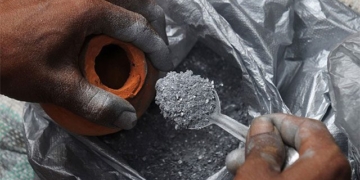The Earth we inhabit has swallowed all its continents—literally—only to regurgitate them, recycling them into the ground we stand on today.
According to Science Alert, an examination of the world’s oldest rocks has revealed a terrifying past beyond imagination for our planet, as the continents on the surface were suddenly pulled down into the mantle, the layer beneath the Earth’s crust.
This may explain some of the long-standing perplexities for scientists regarding the “cratons,” which are extremely old and stable structures of the Earth’s lithosphere.

Could ancient continental fragments still be hidden within the Earth, waiting for rebirth? – (Image: iStock)
A team led by geologist Fabio Capitanio from the School of Earth, Atmosphere and Environment at Monash University in Australia studied 35 known cratons, modeling them to simulate the Earth’s evolution over the first billion years.
The results show that the Earth not only merged and separated continents multiple times but also “devoured” some of the earliest landmasses.
These were pulled into the mantle, melted, and mixed with molten material from that deep layer until they were completely dissolved.
However, some “remnants” of these continents remain, gradually finding their way back to the surface, accumulating beneath the lithosphere in layers, buoyant and solid, mixed with younger materials they have scavenged from the mantle. These remnants are the cratons, forming a solid foundation for new continents to emerge.
A shocking revelation is that some such fragments still lie beneath, waiting for the opportunity to rise again. In other words, in the future, aside from the continents we know, the Earth may resurrect some “zombie continents” from within its depths, recycling and combining them with newer materials.
As for the continents you currently stand on, it is undeniable that they may be swallowed to make way for the rising “zombies.” But don’t worry, as the lifespan of humanity may not be long enough to witness the changes that take hundreds of millions to billions of years in the Earth’s continents.
This research adds a significant piece to the larger picture of the incredible geological evolution of Earth. According to Dr. Capitanio, this not only helps explain how life appeared and persisted on Earth but also guides the exploration of extraterrestrial worlds.
Cratons remain a great treasure to excavate. They not only contain important metals and various other minerals but also record the tectonic and evolutionary history of the Earth.
The study has just been published in the scientific journal PNAS.


















































